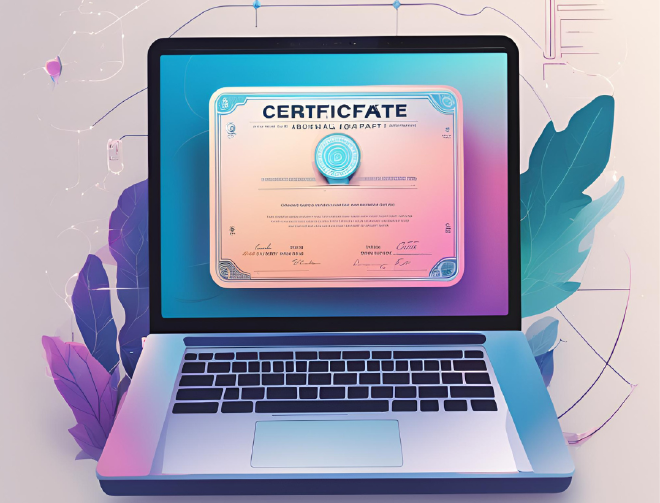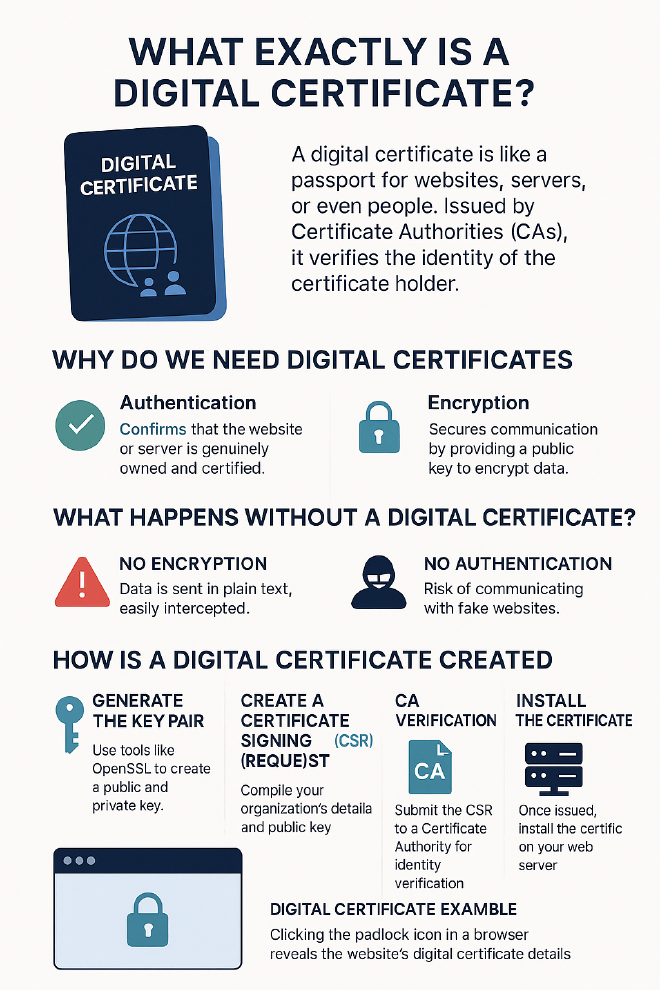
Why Do We Need Digital Certificates?#
The internet relies on trust, and digital certificates help establish it.
Here’s why they matter:
Authentication Certificates confirm that the website or server is genuinely owned and certified. It stops hackers from creating a fake copies of that site.
Encryption It helps secure the communication by providing a public key to encrypt data, which can only be decrypted by the intended recipient with its private key. This ensures that sensitive data, like passwords or credit card details, stays private.
What Happens Without a Digital Certificate?#
No Encryption: Data is sent in plain text, easily intercepted by hackers.
No Authentication: You might unknowingly send data to a fake website.
Browser Warnings: Browsers block access to sites without certificates, showing the warning “Not Secure” message.
How is a Digital Certificate Created?#
If you own a website that needs to accessed by public securely, you need to have a digital certificate for it.
Step 1: Generate the Key Pair#

Step 2: The Certificate Signing Request (CSR)#

Step 3: CA Verification#
You send the CSR to a Certificate Authority (CA). The CA verifies your identity by checking records like your domain ownership or business credentials. Once they validate your identity, they issue an SSL/TLS certificate that associates your public key with your website’s identity.
Step 4: Installing the Certificate#
You install the issued certificate on your web server. When someone visits your website, their browser automatically verifies the certificate to ensure:
- It was issued by a trusted Certificate Authority
- It hasn’t expired or been revoked
- The website’s domain name matches the certificate
If all these checks pass, the browser shows a padlock icon (🔒), indicating a secure, encrypted connection.
Digital Certificate Example#
Here’s what this page’s digital certificate looks like:
Summary#
Digital certificates are essential for maintaining internet security. They make it possible for you to shop online, log into apps, and share private information with less worry. The next time you see that tiny padlock icon, remember that it signifies a digital certificate working behind the scenes—protecting you with every secure connection.


